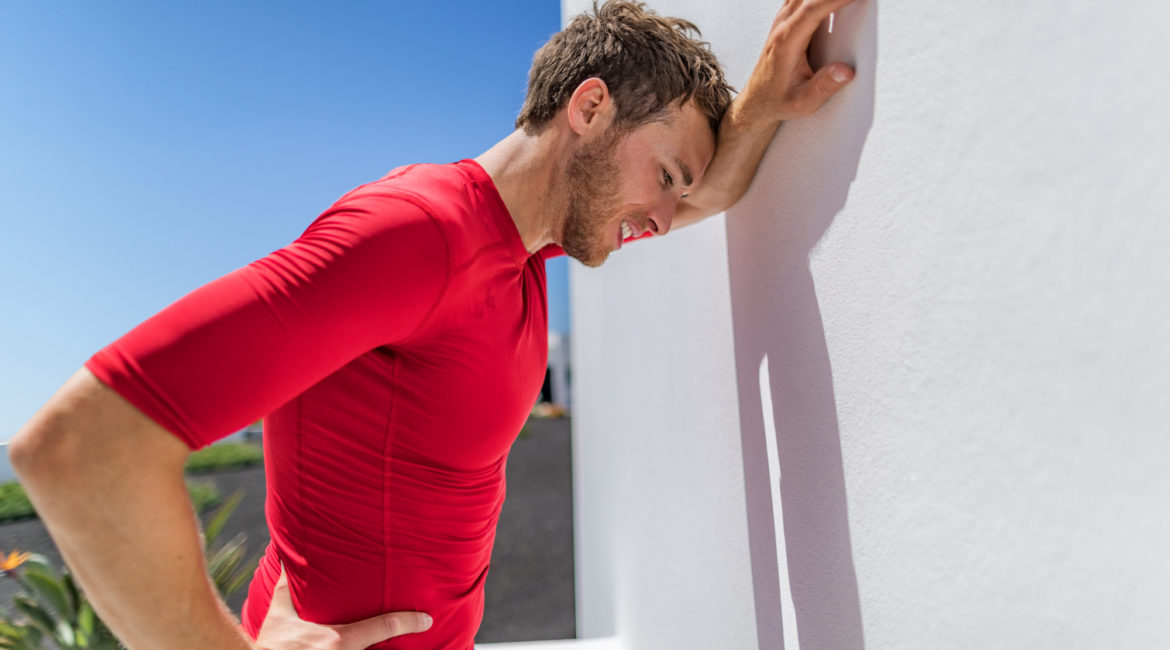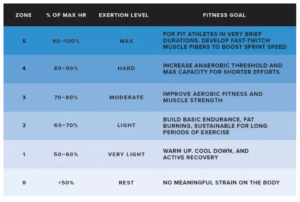Getting back in shape after getting Covid: Zone 2 to get through

ARTICLE BY DAVE
It’s no surprise that our fitness takes a hit when we get sick, with any illness. Generally just the time on the couch will have its deconditioning consequences. But this coronavirus and it’s many mutations, seems to do a special number on our cardio-respiratory system and our overall fitness.
Pete knows this struggle first hand. He was in the early phases of a run training plan for a half marathon, when he and his family had a bout with Covid. It was a fairly unremarkable course, but getting back up to speed for his training plan has been a bit trickier. The legs aren’t there, the lungs aren’t there, and any short quick increases in intensity forces him to back right off, feeling unwell and forcing him to stop.
Pete is not alone in his struggle to get back to regular training and more generally get back to their pre-infection fitness level. Many of our patients recovering from Covid are also in the same boat. They have tried to jump back in, but hit a wall, get frustrated or demoralized, and some unfortunately give up. This of course compounds the issue, as time ticks on and the mountain to get back in shape seemingly gets steeper and longer.
We don’t have a cookbook formula here, but we do have some thoughts worth sharing to give you some action steps.
What do we know about exercise and Covid-19?
Physical activity can play an important role modulating some of the comorbidities associated with poor outcomes from Covid-19 such as hypertension, cardiovascular disease, diabetes and obesity. It is therefore not a surprise that a large observational study found that physical inactivity is directly associated with higher risk for severe Covid-19 outcomes.
Some authors have proposed mitochondrial fitness (the energy producing powerhouses of our cells) are the key to our antiviral defence.
And how do we build up this mitochondrial efficiency? Through training, specifically training that challenges our aerobic (oxygen utilizing capability). This is sometimes more broadly called cardio-training or cardiovascular fitness which can come in many forms (yes some weight training programs can have a cardio focus!).
Cardiovascular fitness may in fact be one of the most impactful modifiable health factors you can address to prevent complications from contracting Covid. I cannot stress this enough.
When should I start?
Early guidelines published in the Lancet Respiratory Medicine recommended prolonged rest after infection, 10 or more days from symptom onset, plus 7 days from symptom resolution. In our experience, that’s on the conservative side of too much rest, especially considering how and when symptom resolution is defined.
A more recent recommendation from the American College of Cardiology (ACC) recommends 3 days of rest for those who have asymptomatic cases after a positive test.
In mild symptomatic cases the ACC recommends waiting until symptom resolution, before starting to think about getting back into an exercise routine.
We agree with the ACC recommendations, but in addition, there are a proportion of people with long-haul Covid symptoms. In these patients, symptoms can linger for months, and overall recovery appears to plateau. In these cases we may recommend re-initiating your exercise plan before full resolution of symptoms, although the exercise plan may be slightly more conservative.
How should I start?
A recent article in the Washington Post promoted the NSCA guidelines for safe return to training following inactivity as a guide for return to activity after Covid infection. In general these guidelines recommend a progressive return to full intensity exercise over a period of 4 weeks. Starting out the first week your volume and intensity should be no more than 50 percent of your maximum usual exercise, followed by gradual weekly increases to 30 percent less than usual, 20 percent less and 10 percent less than usual by week 4. We agree entirely with the overarching message: start slow and progressively build up your fitness.
However, getting back in shape in 4 weeks is not straightforward post Covid. Symptoms such as chest tightness, coughing or difficulty breathing are common in these cases with higher intensity efforts. This recovering cardiac and respiratory functioning is quite different than just inactivity.
The NSCA guidelines were published in 2019, and were not designed as a Covid specific recovery plan (it was designed to prevent sudden cardiac death, exertional heat illnesses and exertional rhabdomyolysis), although it is a nice framework that could work in cases where covid complications were minimal.
Cardio Zone training
As an alternative to the NSCA guidelines, we recommend a cardio zone training approach. If you are an endurance athlete you will be familiar with this training method.
All you need is a heart rate monitor and a cardio plan. That could be a bike, treadmill, rower, elliptical etc. Something to allow a consistent effort over a prolonged period of time. If you are an experienced runner, running could be an option as well.
Heart rate zones are heart rate ranges relative to your maximum heart rate that signify levels of cardiovascular exertion. Each level has a physiological cost or stimulus which we can harness to train certain energy systems. This chart below from Whoop details the typical zone ranges and typical fitness goals attached to those zones.

The first step to utilizing zone training is to calculate your maximum heart rate. The traditional, old school, method is to subtract your age from 220. However this over simplified equation does not take into account the many variables such as genetics, training history or other modifiable health decisions (smoking etc). Other similar formulas have been tested such as the Tanaka (208 – 0.7 x age) or the Gulati (206 – 0.88 x age for women), but again broad generalizations limit the accuracy.
The best way to test max heart rate, is to measure your heart rate under maximum cardiovascular exertion conditions. However, we would not recommend testing your maximum heart rate capability if you are recovering from Covid. So one of the formula’s above will suffice to start.
The foundation of cardio training is Zone 1 and Zone 2 training and to a lesser degree Zone 3 and Zone 4 and very infrequent sprinkling of Zone 5. One example of an endurance program’s percentage of time spent in each zone is seen below.
Zone 1: 30%-40% of your time
Zone 2: 40%-50% of your time
Zone 3: 10%-15% of your time
Zone 4: 5%-10% of your time
Zone 5: 5% of your time
For recovery from Covid, there is some risk of symptom re-aggravation and system overload (for example myocarditis) with high intensity training. Although estimates of post Covid myocarditis have now dropped to as low as 1-2% , it is still generally agreed that “too hard, too quick” is the biggest risk for a severe outcome due to exercise. And unfortunately there have been many cases of athletes having sudden cardiac events (post infection and post vaccine), so it is important to err on the side of caution. In addition to an acute cardiac event, more commonly it may re-ignite chest tightness, respiratory distress or a coughing fit that is uncomfortable and undesirable.
Zone 2 to get through
Zone 2 is the maximum level of exertion that is entirely mitochondrial oxidative phosphorylation before you start to accumulate lactate. This means you can go longer and won’t require the same length of recovery before your next training session.
Training at zone 2 subsequently improves mitochondrial efficiency and mitochondrial density, which is key to building cardiovascular fitness. Other physiological adaptations subsequent to Zone 2 training are improved stroke volume (amount of blood volume pumped per heart beat), improved oxygen delivery and utilization and improved V02 max. In essence better heart and lung function combine to result in improved cardiorespiratory fitness. It is these adaptations, among others that we believe can help nudge you forward, while preventing the big setbacks or consequences of going too hard.
So what did this process look like for Pete?
After a 2.5 week hiatus from running Pete started at the lower range of his Zone 2 with a slow paced 5km (remember he was training for a half marathon pre infection). For the first 2 weeks, he did 6 runs all within Zone 2 with minor variations in pace and distance.
Of note: he did test an interval run in Week 2 as well but was forced to stop as he “felt like crap”.
Week 3 he started the week with another 5km run keeping a zone 2 pace. This is the first run he felt really good. Because of this renewed feeling in week 3, later in the week he did an interval workout on the bike with some of the spikes entering zone 3 and 4 for very short periods. This also felt good. For his last training session in week 3 post infection he increased his running distance to an 8km run with a portion of the run at a quicker tempo.
Now entering week 4, Pete is back in the saddle training for his half marathon.
